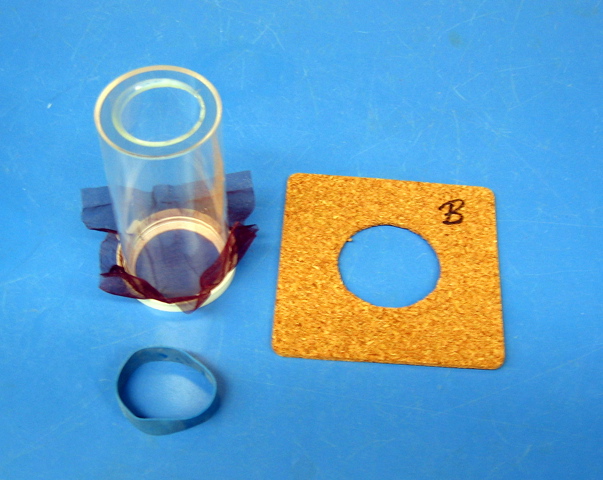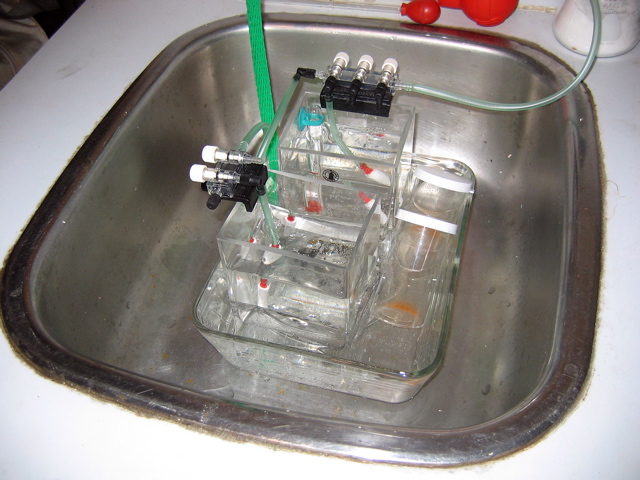
Photo 1
|
Techniques to collect, transport and rear marine invertebrate larvae for home study by Ian MacGregor, Burnaby, British Columbia, Canada |
I volunteer at the Vancouver Aquarium and have developed the following techniques to collect, transport and rear marine invertebrate larvae for home study.
The first problem was collecting the larvae. Since I am only at the Aquarium twice a week I needed a simple, easily taught technique that staff members could use to collect and hold the little "critters" for me. My solution was the "critter corral", a floating concentrating / holding chamber made from a large plastic pill vial, an Ikea cork coaster, an elastic band and small square of cloth mesh ( photo 1). Crab larvae were successfully collected for me using the technique illustrated in photo 2, floating unobtrusively about the surface of the large salt water tank for about a week. The crab larvae were fed fresh Artemia nauplii every day or so by staff members at the Aquarium.

Photo 1

Photo
2
Transferring the critters to transport vials was done with a minimum of mechanical and thermal stress under water in a small glass dish. A simple flick of the thumb removes the meshed end of the corral. An insulated lunch bag and an ice pack kept the larvae cool on the ride home.
The next problem was to construct a simple, inexpensive and effective chilled salt water mini-aquaria system at home so that I could study larval development with my Zeiss IVb stereo-microscope. My solution was to use 2 Ikea flower vases sitting in a Pyrex oven dish water bath ( photo 3 ) into which a trickle of cold tap water flowed. The mini-aquaria maintain a constant 10C. Sea water temperature at the Vancouver Aquarium was 9.5C at the time. To maintain gentle circulation within the flower vases air was restricted to a flow rate low enough so that you could count the bubbles rising from the air stones.

Photo
3
Larval mortality was fairly high, as could be expected from this first attempt but I now have, what I hope, are effective protocols for rearing crab larvae and would be glad to share this information with anyone who is interested.
The "critter corral" was very inexpensive and easy to construct ( 20 minutes max. for me ). Feel free to contact me for any questions readers may have.
Comments to the
author
Ian
MacGregor
are welcomed.
Published in the May 2006 edition of Micscape.
Please report any Web problems or offer general comments to the Micscape Editor .
Micscape is the on-line monthly magazine of the Microscopy UK web site at Microscopy-UK
© Onview.net Ltd, Microscopy-UK, and all contributors 1995
onwards. All rights reserved.
Main site is
at www.microscopy-uk.org.uk
with full mirror
at www.microscopy-uk.net
.